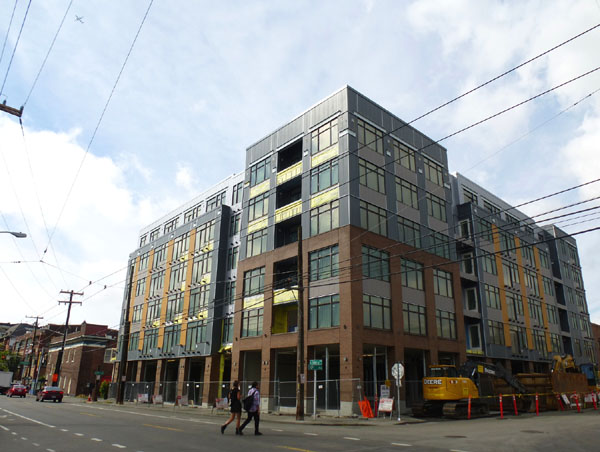Too little housing, not land speculation, is what’s really driving up rents
Editor’s Note:Â In debates on affordable housing, those who advocate for increasing housing supply as a solution are often criticized for neglecting social justice. But as Alex Steffen writes below, not only is the production of compact housing in urban centers a broad sustainability solution, it is also an essential strategy for addressing social justice in growing cities like Seattle.
>>>
Speculation is simply a bet that demand will outstrip supply and thus drive up the price of the investment in question. There *are* situations where speculation sends a signal to others that prices will rise, and so those others also make speculative investments: if those bets are irrational, we call it a bubble. But if those bets are not irrational—if people will pay those prices—that speculation simply shows that there is a massive gap between supply and demand. Speculation cannot itself raise prices artificially in any sustained way if supply is abundant or demand drops. It disturbs me that people discussing housing policy don’t understand these concepts (or at least think they don’t apply to housing). Increasing housing supply quickly is the only actual solution to rising housing costs.
That said, it’s worth noting that the market always serves the least profitable customers last and worst. If we’re concerned about low-income people (and I think we ought to be), then public housing and/or serious incentivization of non-market-rate housing has to be part or the mix… part of a mix, if we’re smart, that includes every possible incentive to develop more high-quality housing at all income levels as quickly as possible.
As I’ve said before, increasing housing supply is the most important structural social justice issue facing most successful cities.
>>>
Alex Steffen is one of the world’s leading voices on sustainability, social innovation and planetary futurism. You can follow Alex on Twitter at @AlexSteffen. This post originally appeared at AlexSteffen.com.
>>>
Photo of new market rate housing under construction in Seattle’s Capitol Hill neighborhood by Dan Bertolet. If the thousands of new units hitting the market in this neighborhood were not being built, housing demand would not go away, and the result would be more rapidly rising rents, and more renovation of the neighborhood’s older, cheaper housing stock to rent at higher rates.


